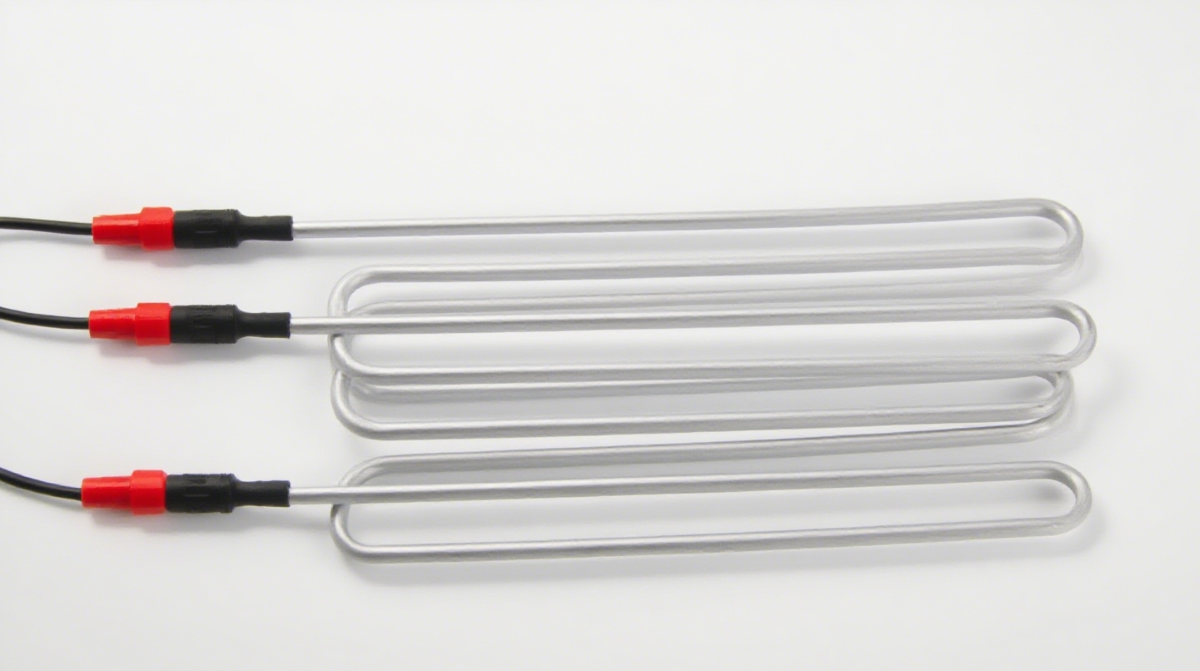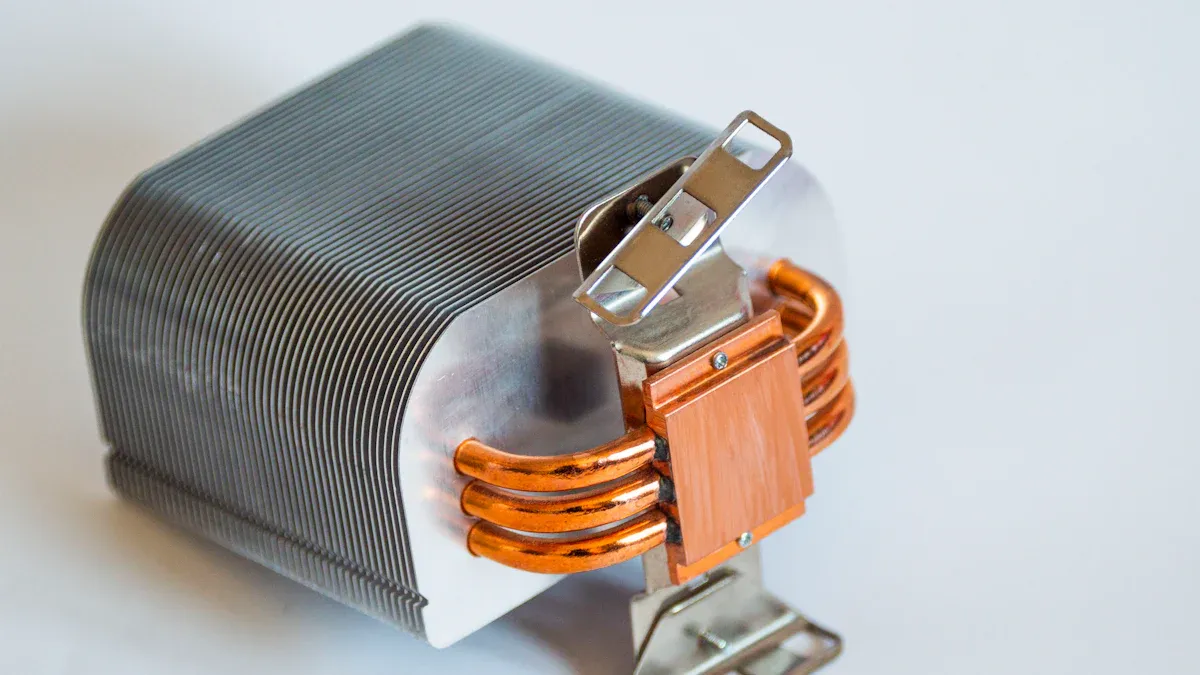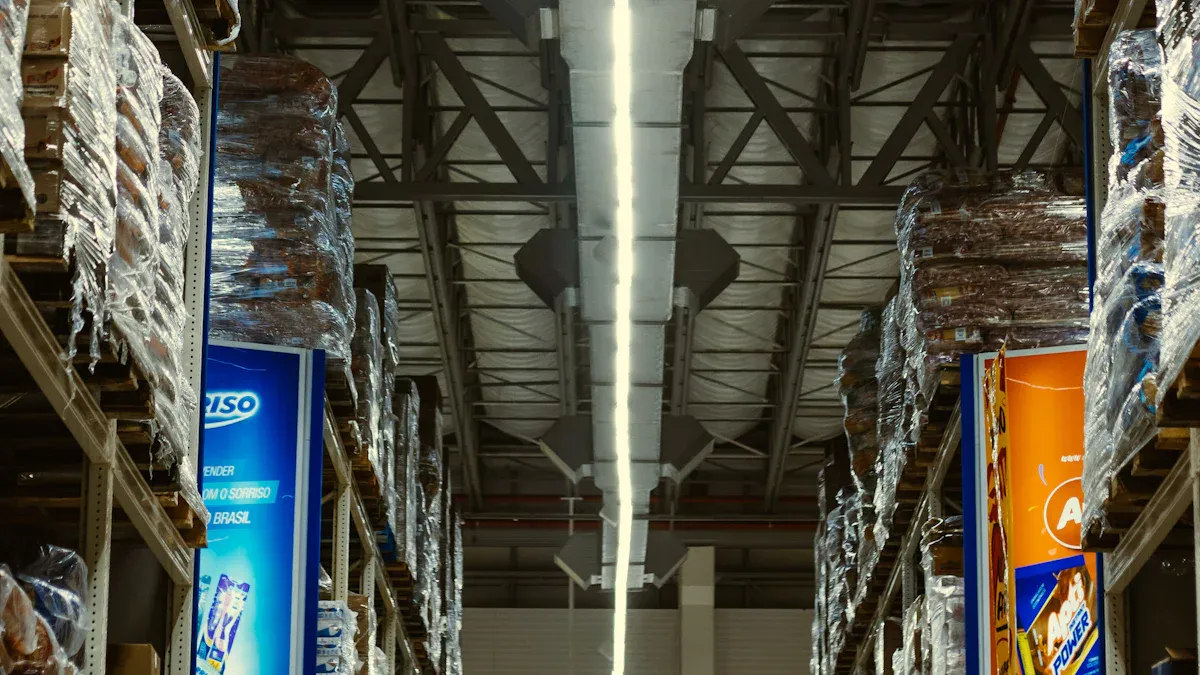
Cold storage facilities often face ice buildup on evaporator coils. Defrosting heating elements, like Pipe Heating Tape or U Type Defrost Heater, help melt frost quickly. Studies show that using a Defrosting Heater Element or Fridge Defrost Heater can save anywhere from 3% to over 30% in energy.
Key Takeaways
- Defrosting heating elements melt ice on evaporator coils quickly, helping refrigeration systems use up to 40% less energy and lowering electricity bills.
- These heaters run only when needed, keeping coils clear and reducing wear on equipment, which leads to fewer breakdowns and lower repair costs.
- Proper installation and regular maintenance of defrosting heating elements ensure long-lasting performance and maximize energy savings in cold storage facilities.
Defrosting Heating Elements and Energy Efficiency

Why Ice Buildup Increases Energy Use
Ice buildup on evaporator coils creates big problems in cold storage. When frost forms, it acts like a blanket over the coils. This blanket blocks the cold air from moving freely. The refrigeration system then has to work much harder to keep things cold. As a result, energy bills go up.
When ice covers the coils, it reduces the cooling power by up to 40%. The fans have to push air through narrow gaps, which makes them use more electricity. Sometimes, the system even shuts down because it cannot keep up. High humidity in the storage area makes the problem worse. More moisture means more frost, and that leads to higher energy use and more maintenance costs.
Regular cleaning and proper defrost cycles help prevent these issues. If the coils stay clean and free of ice, the system runs smoothly and uses less energy.
How Defrosting Heating Elements Prevent Energy Waste
Defrosting heating elements solve the ice problem by melting frost before it builds up too much. These heaters sit very close to the evaporator coils. When the system senses ice, it turns on the heater for a short time. The heater melts the ice quickly, and then it shuts off automatically. This keeps the coils clear and helps the system work at its best.
The heating elements use electric wires inside stainless steel tubes. They heat up fast and transfer warmth right to the ice. The system uses timers or thermostats to control when the heaters turn on and off. This way, the heaters only run when needed, so they do not waste energy.
By keeping the coils free of frost, defrosting heating elements help the refrigeration system use less power. The fans do not have to work as hard, and the compressor does not run as long. This means lower energy bills and less wear on the equipment.
Real-World Energy Savings and Case Studies
Many businesses have seen big savings after installing defrosting heating elements. For example, a grocery store that upgraded its cold storage system saw its yearly energy use drop from 150,000 kWh to 105,000 kWh. That is a savings of 45,000 kWh each year, which saved the store about $4,500. A small restaurant also upgraded and saved 6,000 kWh per year, cutting costs by $900.
| Example | Before Upgrade Energy Consumption | After Upgrade Energy Consumption | Annual Energy Savings | Annual Cost Savings | Payback Period (Years) | Notes |
|---|---|---|---|---|---|---|
| Grocery Store Upgrade | 150,000 kWh | 105,000 kWh | 45,000 kWh | $4,500 | ~11 | Includes automated defrost cycles as part of system improvements |
| Small Restaurant Upgrade | 18,000 kWh | 12,000 kWh | 6,000 kWh | $900 | ~11 | Energy savings from modern unit with better temperature control and defrost features |
Some supermarkets in Europe found that the money they spent on defrosting heating elements paid off in less than two years. These quick payback periods show that the investment is worth it. Not only do businesses save money, but they also make their cold storage more reliable.
Tip: Facilities that use defrosting heating elements often see fewer breakdowns and lower repair costs, making their operations smoother and more dependable.
Implementing Defrosting Heating Elements in Cold Storage

Types and Operational Principles
Cold storage facilities can choose from several defrosting methods. Each method works differently and fits certain needs. The table below shows the main types and how they operate:
| Defrosting Method | Operational Principle | Typical Application / Notes |
|---|---|---|
| Manual Defrosting | Workers remove frost by hand. The system must stop during this process. | Labor-intensive; used for wall-pipe evaporators. |
| Electric Heating Elements | Electric tubes or wires heat up and melt frost on coils or trays. | Common for fin-type evaporators; uses timers or sensors. |
| Hot Gas Defrosting | Hot refrigerant gas flows through coils to melt ice. | Fast and uniform; needs special controls. |
| Water Spray Defrosting | Water or brine sprays onto coils to melt frost. | Good for air coolers; can cause fogging. |
| Hot Air Defrosting | Heated air blows over coils to remove ice. | Simple and reliable; less common. |
| Pneumatic Defrosting | Compressed air helps break up frost. | Used in systems needing frequent defrosts. |
| Ultrasonic Defrosting | Sound waves break frost loose. | Energy-saving; still being studied. |
| Liquid Refrigerant Defrosting | Uses refrigerant to cool and defrost at the same time. | Stable temperature; complex controls. |
Best Practices for Installation and Maintenance
Proper installation and care keep defrosting heating elements working well. Technicians should pick materials that resist corrosion, like stainless steel or nichrome, for long life. They must install heaters with enough space for airflow and follow safety rules, such as keeping a 10 cm gap from walls and using the right power supply.
Regular maintenance is key. Cleaning coils, checking sensors, and inspecting controls help prevent ice buildup and system breakdowns. Monthly cleaning and biannual inspections keep everything running smoothly. When technicians spot problems early, they avoid costly repairs and keep energy use low.
Tip: Scheduling defrost cycles during low-use hours, like overnight, helps maintain steady temperatures and saves energy.
Comparison with Other Energy-Saving Methods
Defrosting heating elements offer convenience, but other methods can save more energy. Hot gas defrost uses heat from the refrigeration system, making it more efficient than electric heaters. Reverse cycle defrost also uses refrigerant heat, reducing energy use and keeping temperatures stable. Manual defrosting uses less energy but needs more labor and time. Some new systems use sensors to start defrosting only when needed, cutting down on wasted energy and lowering environmental impact.
Facilities that want the best energy savings often combine several methods, like hot gas defrost and smart controls, for top performance.
Defrosting heating elements help cold storage facilities save energy, cut costs, and keep systems running smoothly. Many sites report energy savings up to 40% and fewer breakdowns.
With regular care and smart use, these heaters offer a proven way to boost reliability and lower bills.
FAQ
How often should a facility run defrost cycles?
Most facilities run defrost cycles every 6 to 12 hours. The exact timing depends on humidity, temperature, and how often people open the doors.
Tip: Smart sensors can help set the best schedule.
Do defrosting heating elements increase electricity bills?
They use some power, but they help the system run better. Most facilities see lower total energy bills after installing them.
Can staff install defrosting heating elements themselves?
A trained technician should handle installation. This keeps the system safe and ensures the heaters work as designed.
Post time: Aug-07-2025




